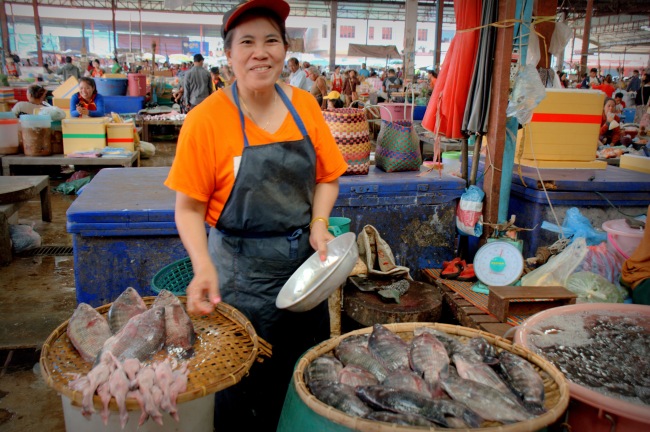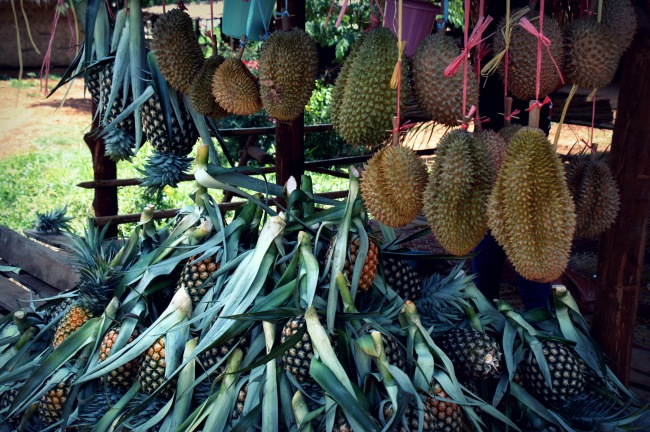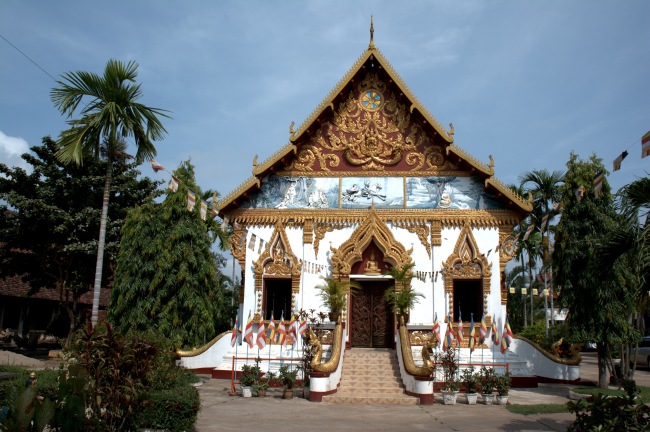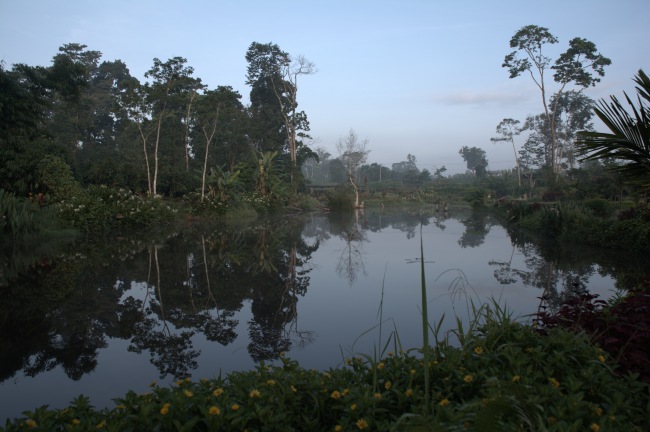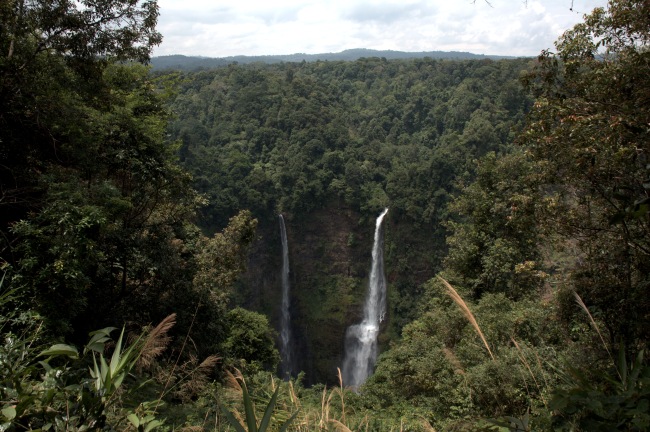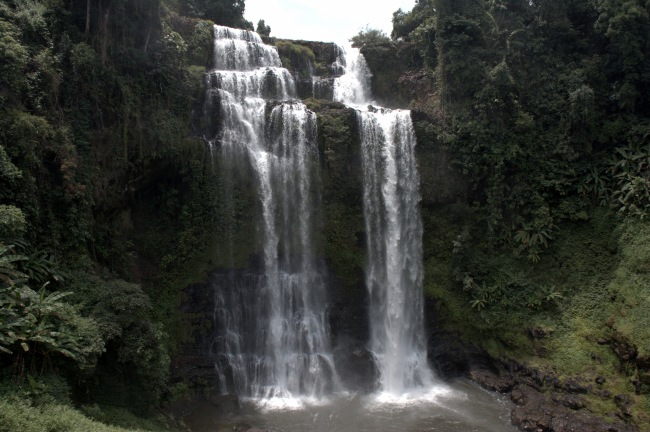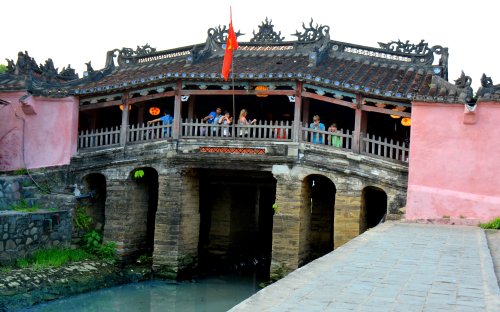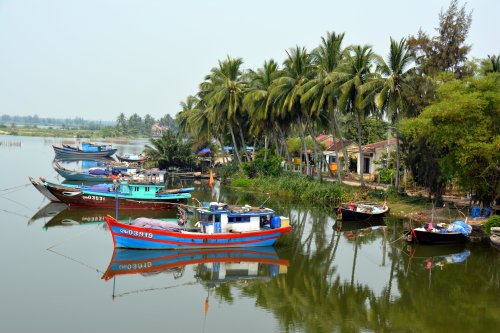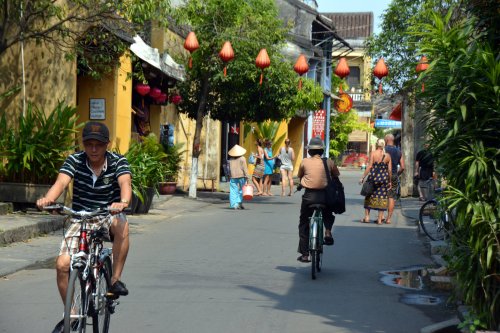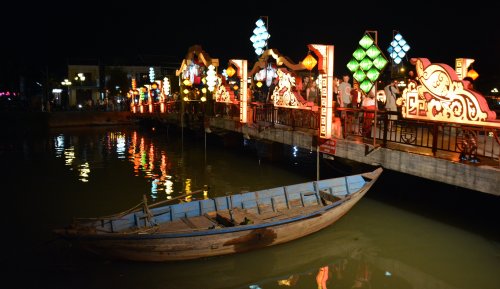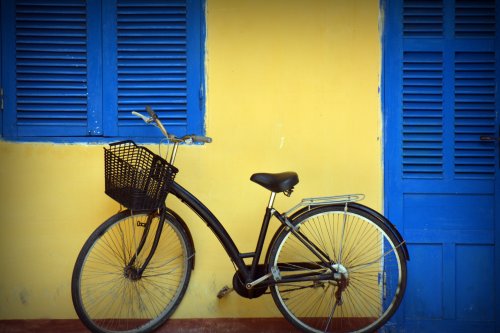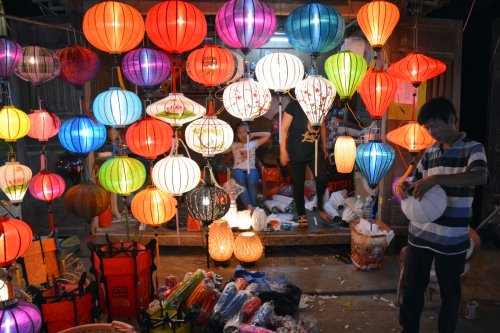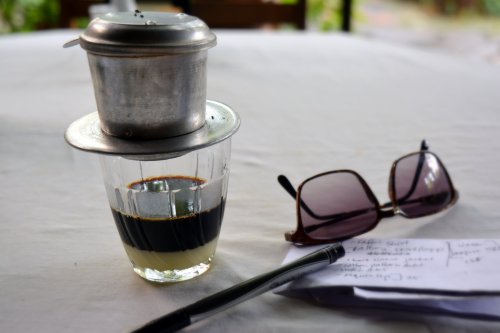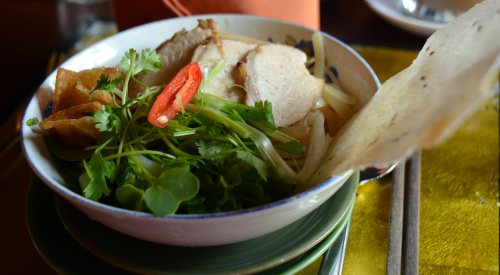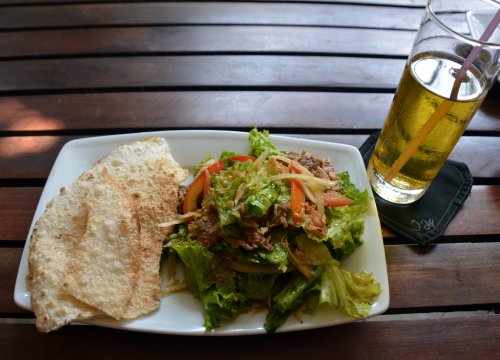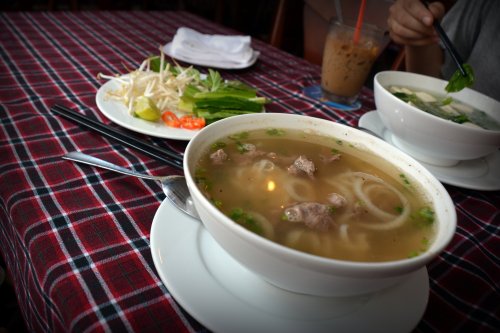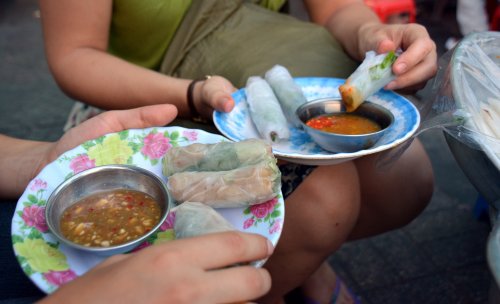Hoi An may boast World Heritage historical houses, temples, and nearby beaches, but one of its main draws is getting custom fitted clothes in any style imaginable.

Misha and I definitely came with tailoring largely in mind. There are tailors in Lao, and I have done some tailoring here, but most only really do traditional Lao outfits for ladies, and men’s work clothing. Tailors who make styles other than tightly-fitting silk tops are harder to come by, slow (a month or more), and most importantly, there is no variety of quality fabric (aside from those for the traditional dress). I knew Hoi An, with fabric in multitudes of textures and colors, was going to be overwhelming.
And it certainly was… In Hoi An there is an impression that everyone in the town is somehow involved in the tailoring industry. If you meet someone who isn’t a tailor themselves, you can bet their brother/wife/cousin/sister-in-law/best friend/niece is. Every third shop is a tailor shop, with someone calling out to you sweetly from the doorway. The range is extreme, with some fancy high-end stores with uniformed staff, their own labels, and waiting courtyard areas. Meanwhile, others are just one-room affairs, with a few family members running the show. With this overwhelming amount of choice, it was essential for us to strategize and plan ahead–what we wanted, and how much we were willing to spend. There were so many details to consider: fabric type, texture, weight, color, zipper style and placement, seams, neckline, buttons, lining, sleeves, length, and so on. Who knew that getting custom made clothes could actually be so stressful!? (But hey, I’m not complaining). In Hoi An, it feels like sky is the limit–winter coats, sundresses, ball gowns, suits, shorts, even shoes (from Converse, to strappy sandals, to knee-high boots)–it all can be made in a day or two.

Approaching the cloth market.

Inside the cloth market.

A stall inside the cloth market.
In the end, after a day of scouting, sketching, price comparing, and feeling fabric, we decided to go for a combination, getting a few key items (a nice dress and jacket in my case) at an expensive designer store, and more standard items (copies of shirts and shorts already in my wardrobe) at a stall in the cloth market. And of course–shoes (just boots and wedges, in an act of incredible restraint).

The interior of one of the fancier tailor shops.
Truly, the most astounding part of the whole undertaking is the speed. On our last day, we ordered a last-minute pair of shoes at 10am…which were ready, stitched-soles and all, by 8pm. Perhaps it’s a good thing this isn’t more common as it would be sorely tempting…don’t know what to wear tonight? Make something new!

Picking out colors at the shoe tailor.

The boot aisle at the shoe tailor.
Indeed, tailoring and eating took up most of our time, but occasionally we did manage to have moments for more tranquil and cultural activities, like walking along the harbor in the old town, and visiting the famous Japanese covered bridge. One day, we even left downtown for the beach, walking a sweltering few miles to An Bang, the slightly less touristy beach. We “rented” umbrellas and chairs for free, in return for patronizing an astoundingly mediocre beachside restaurant, and admired the strage circular rowboats docked on shore.

The circular boats on An Bang beach.
Between fittings and feasting on cao lau, the four days in Hoi An flew by, and soon we found ourselves back en route to Vientiane, with full suitcases and full stomachs to show for our week in Vietnam.


